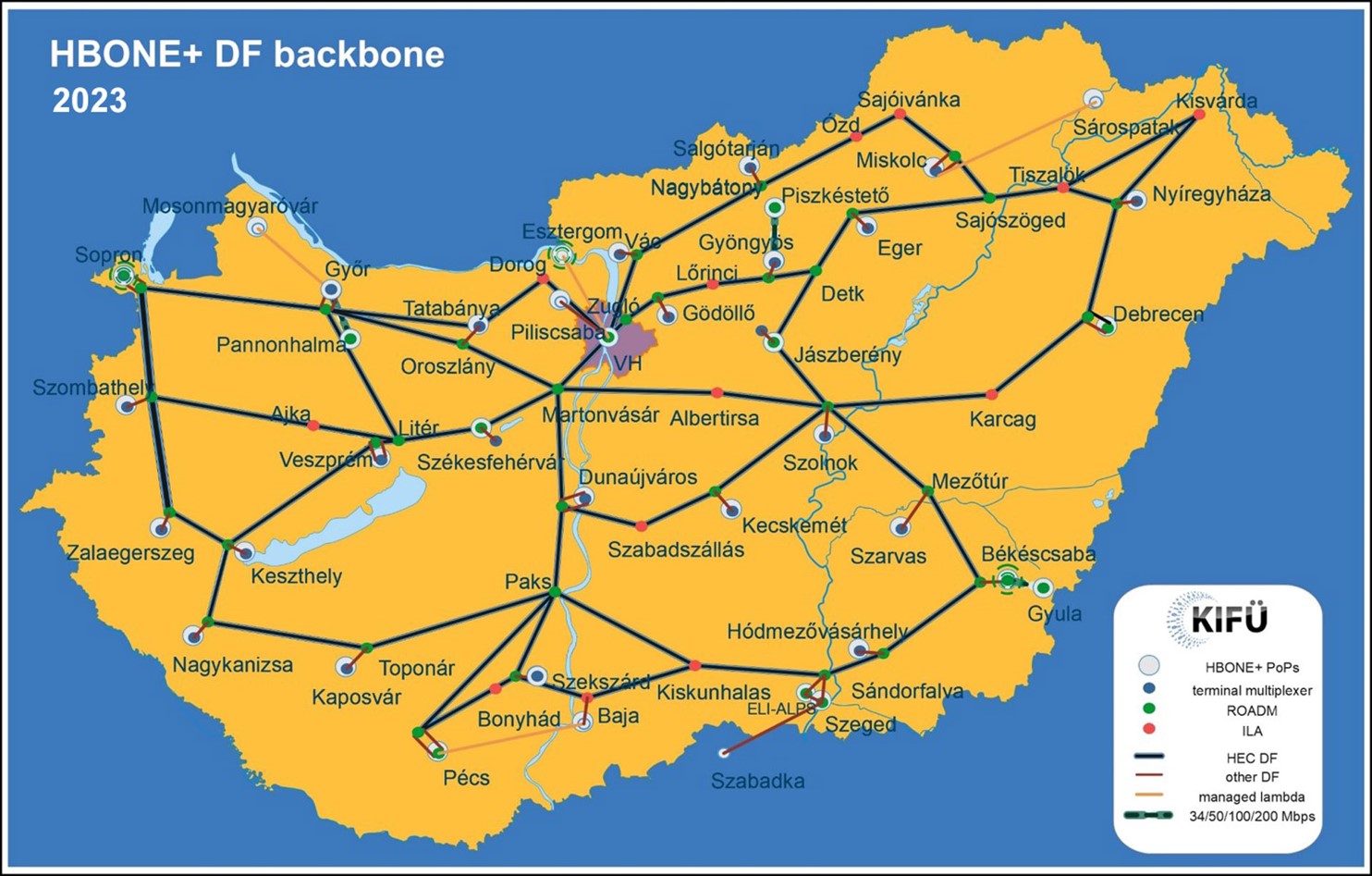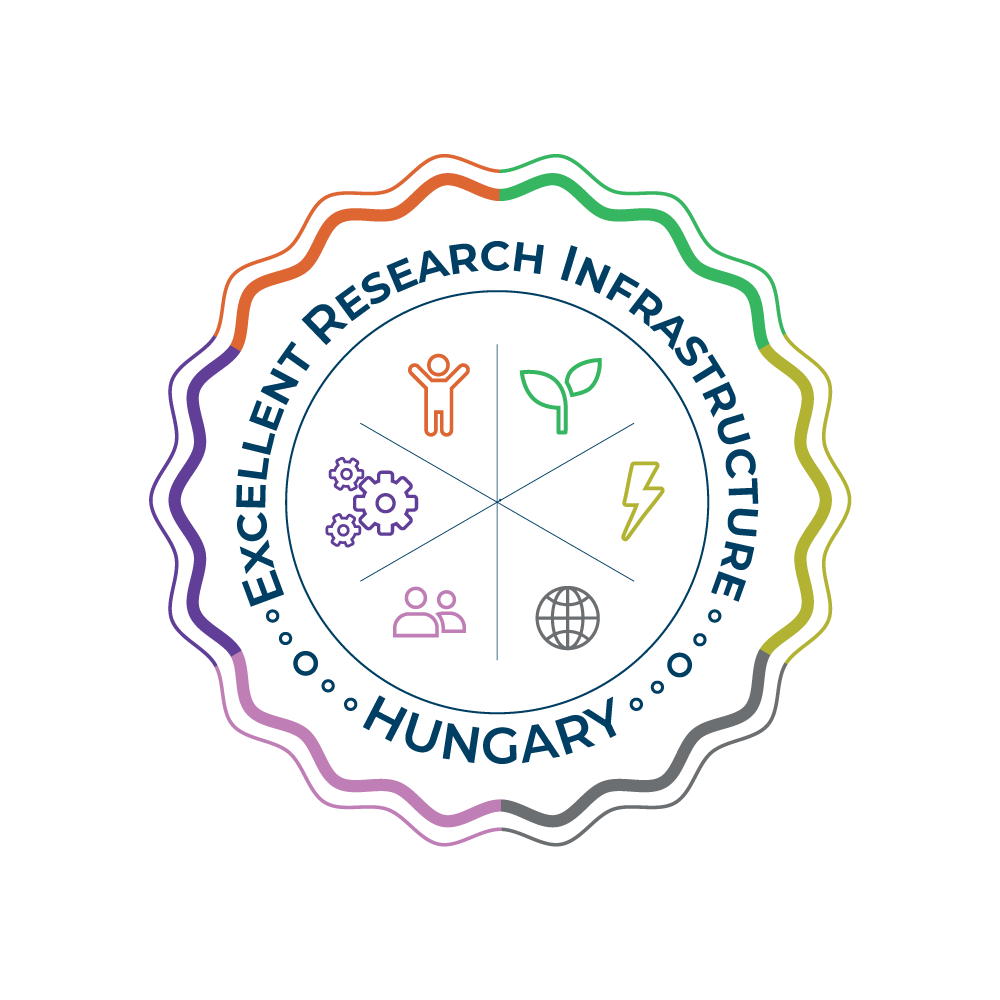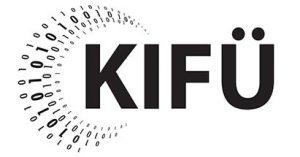HBONE/HBONE+ Today
The HBONE backbone consists of nodes (PoP in the figure) – which are basically located in an academic institution – and redundant and high-speed connections between the nodes. KIFÜ operates high-performance communication equipment (DWDM, router, switch) servers and other equipment necessary for the operation of ICT services in PoPs and endpoints, in an air-conditioned and uninterruptible power supply environment.
The historical past: HBONE
The current generation of HBONE+
It is used to implement all the advanced hybrid network services that are also supported by GEANT (see the figure). The DWDM channels of the new hybrid network are capable of operating at data rates of up to 200 Gbps (currently typical speeds are 10, 40 and 100 Gbps). Unlike traditional telecommunication solutions, the new generation of HBONE and DWDM technology is not only used in the backbone network, but also takes it all the way to large end users, creating new services. Of course, the flexible Ethernet-based IP/MPLS layer above the DWDM layer is also developed and operated by KIFÜ, mainly with the support of Cisco solutions.

The future of HBONE+, DIÁKHÁLÓ
From an infrastructural point of view, in addition to strengthening the capacity and reliability of the backbone network, its network edge PoP-s will be systematically and gradually extended to the counties (174 counties, with optical connections, mainly on leased infrastructure) from the existing university HBONE+ PoPs. These enable KIFÜ to take network flexibility, manageability and development of service provision even more in hands. With this development in the coming years, HBONE+ will become an even more integral part of the multi-service educational infrastructure and even the ecosystem, which is collectively known as the “DIÁKHÁLÓ”.It is used to implement all the advanced hybrid network services that are also supported by GEANT (see the figure). The DWDM channels of the new hybrid network are capable of operating at data rates of up to 200 Gbps (currently typical speeds are 10, 40 and 100 Gbps). Unlike traditional telecommunication solutions, the new generation of HBONE and DWDM technology is not only used in the backbone network, but also takes it all the way to large end users, creating new services. Of course, the flexible Ethernet-based IP/MPLS layer above the DWDM layer is also developed and operated by KIFÜ, mainly with the support of Cisco solutions.
The KIFÜ Hungarian Research and Educational infrastructure recognised as an Excellent Research Infrastructure in 2021.

